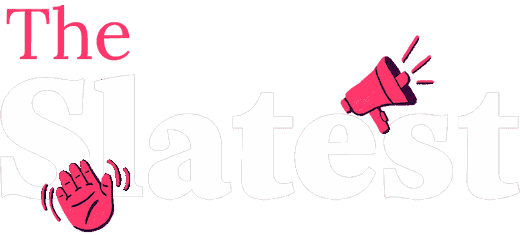The Supreme Court Is Writing a Slow-Motion Eulogy for One of America’s Greatest Achievements

Sign up for the Slatest to get the most insightful analysis, criticism, and advice out there, delivered to your inbox daily.
Next month marks the 60th anniversary of the passing of the Voting Rights Act—a law often celebrated as the “crown jewel” of the Civil Rights Movement. Signed in 1965 after years of organizing and unimaginable sacrifice, it was meant to realize the constitutional promise that the right to vote would not be denied or abridged on account of race.
Yet, as we approach this milestone, we find ourselves not in a moment of reflection or rededication, but in a state of legal free fall. The Supreme Court has scheduled arguments next term on Louisiana’s racially gerrymandered congressional map, and the court as early as next week may put on hold and set for argument a case in which the Eighth Circuit held that private plaintiffs have no right to sue to enforce Section 2 of the Act. These pending decisions threaten to gut what remains of this once powerful statute, which has already been largely hollowed out by the Roberts court over the last decade-plus.
The Voting Rights Act was always meant to be a living safeguard, its strength rooted in community enforcement. Section 2 has allowed private citizens—not just the government—to sue when states draw district lines or enact voting laws that dilute minority voting power. It is this private right of action that has given the act its sharpest teeth.
Over the past 12 years, however, the Supreme Court has systematically dulled those teeth. In Shelby County v. Holder, the court struck down the formula that determined which states had to preclear voting changes with the federal government, effectively paralyzing Section 5. In Brnovich v. Democratic National Committee, the court made it far harder to prove racial discrimination in voting under Section 2, introducing vague “guideposts” that encourage restrictive laws to flourish. And in Rucho v. Common Cause, the court declared partisan gerrymandering nonjusticiable, paving the way for maps that achieve racial suppression under the fig leaf of party strategy.
All these decisions signal a deeper anxiety: The court seems more committed to a romanticized, static idea of democracy than to its messy, lived reality—a reality shaped by race, power, and ongoing attempts to exclude.
Compounding this erosion is what happened to the Department of Justice during this Trump administration. The DOJ’s Voting Section, historically tasked with defending the franchise, has been quietly hollowed out. Career civil rights attorneys have left or been reassigned. At the same time, the section’s litigation priorities have shifted away from protecting minority voters and toward investigating alleged “voter fraud”—a phantom problem that has long been used to justify restrictive measures.
Under Trump, the Voting Section has filed almost no major enforcement actions under the Voting Rights Act. Meanwhile, states have moved aggressively to pass laws that limit absentee voting, reduce early voting, and impose stricter ID requirements—laws that disproportionately burden voters of color.
The result is a legal and institutional landscape where the Voting Rights Act stands more as a museum piece than a living instrument. The anniversary this year should have been an opportunity to celebrate a durable constitutional achievement. Instead, it feels like a eulogy in slow motion.
Louisiana’s congressional map embodies this crisis. Black residents make up about one-third of the state’s population, but are confined to 1 out of 6 congressional districts—an arrangement a federal court rightly found violated Section 2. But instead of swiftly remedying the violation, the Supreme Court’s intervention has frozen the process, effectively preserving a map designed to dilute Black political power.
If the court now rules that private plaintiffs cannot bring Section 2 suits, it would mean that only the Department of Justice could enforce what remains of the act—an agency with finite resources and, as recent history shows, vulnerable to political capture. This would be a final act in a trilogy of decisions that have systematically stripped away the act’s power: first, by eliminating preclearance; then, by raising the burden of proof; and finally, by removing community-driven enforcement altogether.
In my classroom, I teach students about the Voting Rights Act as both landmark legislation and living metaphor: a testament to the nation’s aspirations and its failures. My students often arrive with the comforting myth that American democracy, though imperfect, is always expanding, always progressing. By the end of our discussions, many understand that democracy is not a steady march but a contested terrain—one that can and does recede.
The 60th anniversary should have been a moment of renewal. Instead, it is a warning. The Voting Rights Act was never meant to police itself from the safety of a Washington office. Its power depended on ordinary people—community organizers, elders at kitchen tables, plaintiffs brave enough to put their names on lawsuits.
As we await the court’s decisions, we must confront an uncomfortable truth: The law will not save us from ourselves. It is a tool, not a savior. When the tools fail, or are taken away, the responsibility returns to us—to organize, to legislate, to vote, to remember that democracy is not a gift but a fragile, ongoing act of collective creation.
Sixty years ago, marchers in Selma faced tear gas and batons so that we might inherit a fuller democracy. Today, the question is whether we will defend that inheritance or allow it to vanish, one decision at a time.
Correction, July 16, 4:25 p.m.: This post originally misstated that the Supreme Court had already scheduled arguments in the Section 2 private right of action case.
 Sign up for Slate's evening newsletter.
Sign up for Slate's evening newsletter. Slate





